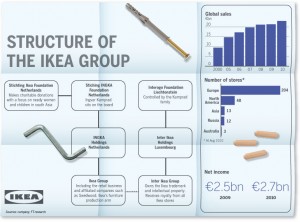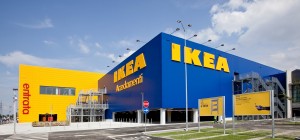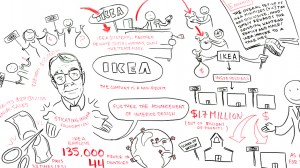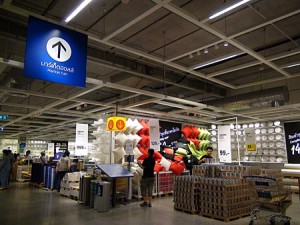Ikea is one of the world’s largest home furnishings retailer with 360 stores in 47 countries (Forbes). Surprisingly, this $11.8 billion empire is classified as a charity. Founded in Sweden in 1943 by Ingvar Kamprad, Ikea has achieved remarkable international success and faced few obstacles to its expansion (Forbes). The ingenuity of the brand’s unique retail formula extends to the company’s finances. By exploiting the obscure loopholes and quirks of different jurisdictions, Ikea is effectively able to minimize taxes and enjoy other benefits due to the complex fiscal maze of its business structure (Knaebel).
 Ingka Holding, a private Dutch-registered company is Ikea’s parent company. In turn, Ingka Holding belongs to the Stichting Ingka Foundation which is a Dutch-registered, tax-exempt, non-profit legal entity founded by Kamprad in 1982 (Minute MBA). Although Kamprand is not currently the official owner of Ikea, he maintains a strict control through a five-person executive committee, chaired by Kamprad and his sons that oversee the Stichting Ingka foundation.
Ingka Holding, a private Dutch-registered company is Ikea’s parent company. In turn, Ingka Holding belongs to the Stichting Ingka Foundation which is a Dutch-registered, tax-exempt, non-profit legal entity founded by Kamprad in 1982 (Minute MBA). Although Kamprand is not currently the official owner of Ikea, he maintains a strict control through a five-person executive committee, chaired by Kamprad and his sons that oversee the Stichting Ingka foundation.
Stichting Ingka is the world’s wealthiest non profit but as it is not required to publish an annual report, its activities are shrouded in secrecy. According to their website, it aims “to own and govern Inter IKEA Group and to invest in Inter IKEA and thereby in the further expansion of the IKEA Concept, in order to secure the independence and the longevity of the Group and the IKEA Concept” (IKEA Foundation).
The complexity of the business’s organization and lack of transparency make it difficult for tax authorities to enforce and calculate the amount of tax that Ikea is obligated to pay. The creative accounting of Ikea brand including its foundations, multiple international holdings, and a host of subsidiaries allow it to effectively create a tax optimization financial arrangement.
References:
 “Flat-pack Accounting.” The Economist. The Economist Newspaper, 13 May 2006. Web. 26 Sept. 2015. <http://www.economist.com/node/6919139>.
“Flat-pack Accounting.” The Economist. The Economist Newspaper, 13 May 2006. Web. 26 Sept. 2015. <http://www.economist.com/node/6919139>.
“IKEA Foundation.” IKEA Foundation. Web. 25 Sept. 2015. <http://www.ikeafoundation.org/>.
Knaebel, Rachel. “Money Flowing through Tax Havens and Shady Foundations, Thanks to IKEA.” Multinationals Observatory. Web. 28 Sept. 2015. <http://multinationales.org/Money-flowing-through-tax-havens>.
“Stichting INGKA Foundation – Funds for NGOs.” Funds for NGOs. 22 Sept. 2013. Web. 26 Sept. 2015. <http://www.fundsforngos.org/foundation-funds-for-ngos/stichting-ingka-foundation/>.
“The World’s Most Valuable Brands: #45 IKEA.” Forbes. Forbes Magazine, 1 May 2015. Web. 24 Sept. 2015. <http://www.forbes.com/companies/ikea/>.
Tregear, Hannah. “IKEA & The Socializers: Building Social into the Heart of a Global Business – Brandwatch.” Brandwatch. 9 Dec. 2014. Web. 25 Sept. 2015. <https://www.brandwatch.com/2014/12/ikea-assembling-a-listening-hub/>.
“Why Is Ikea a Non-Profit? | OnlineMBA.com.” OnlineMBA.com. Minute MBA. Web. 27 Sept. 2015. <http://www.onlinemba.com/blog/video-why-is-ikea-a-non-profit/>.



